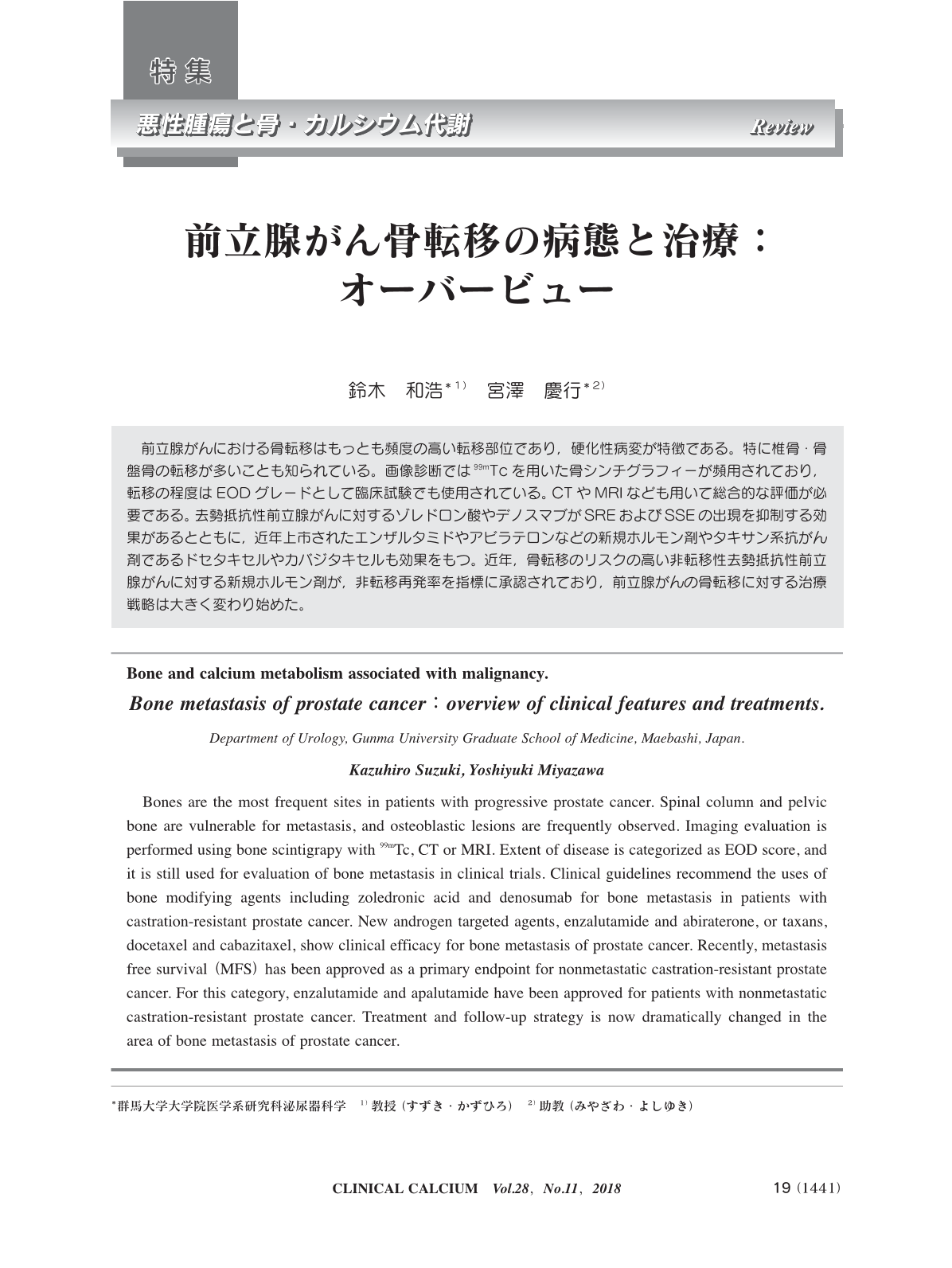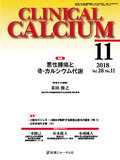Japanese
English
- 有料閲覧
- Abstract 文献概要
- 1ページ目 Look Inside
- 参考文献 Reference
前立腺がんにおける骨転移はもっとも頻度の高い転移部位であり,硬化性病変が特徴である。特に椎骨・骨盤骨の転移が多いことも知られている。画像診断では99mTcを用いた骨シンチグラフィーが頻用されており,転移の程度はEODグレードとして臨床試験でも使用されている。CTやMRIなども用いて総合的な評価が必要である。去勢抵抗性前立腺がんに対するゾレドロン酸やデノスマブがSREおよびSSEの出現を抑制する効果があるとともに,近年上市されたエンザルタミドやアビラテロンなどの新規ホルモン剤やタキサン系抗がん剤であるドセタキセルやカバジタキセルも効果をもつ。近年,骨転移のリスクの高い非転移性去勢抵抗性前立腺がんに対する新規ホルモン剤が,非転移再発率を指標に承認されており,前立腺がんの骨転移に対する治療戦略は大きく変わり始めた。
Bones are the most frequent sites in patients with progressive prostate cancer. Spinal column and pelvic bone are vulnerable for metastasis, and osteoblastic lesions are frequently observed. Imaging evaluation is performed using bone scintigrapy with 99mTc, CT or MRI. Extent of disease is categorized as EOD score, and it is still used for evaluation of bone metastasis in clinical trials. Clinical guidelines recommend the uses of bone modifying agents including zoledronic acid and denosumab for bone metastasis in patients with castration-resistant prostate cancer. New androgen targeted agents, enzalutamide and abiraterone, or taxans, docetaxel and cabazitaxel, show clinical efficacy for bone metastasis of prostate cancer. Recently, metastasis free survival(MFS)has been approved as a primary endpoint for nonmetastatic castration-resistant prostate cancer. For this category, enzalutamide and apalutamide have been approved for patients with nonmetastatic castration-resistant prostate cancer. Treatment and follow-up strategy is now dramatically changed in the area of bone metastasis of prostate cancer.



